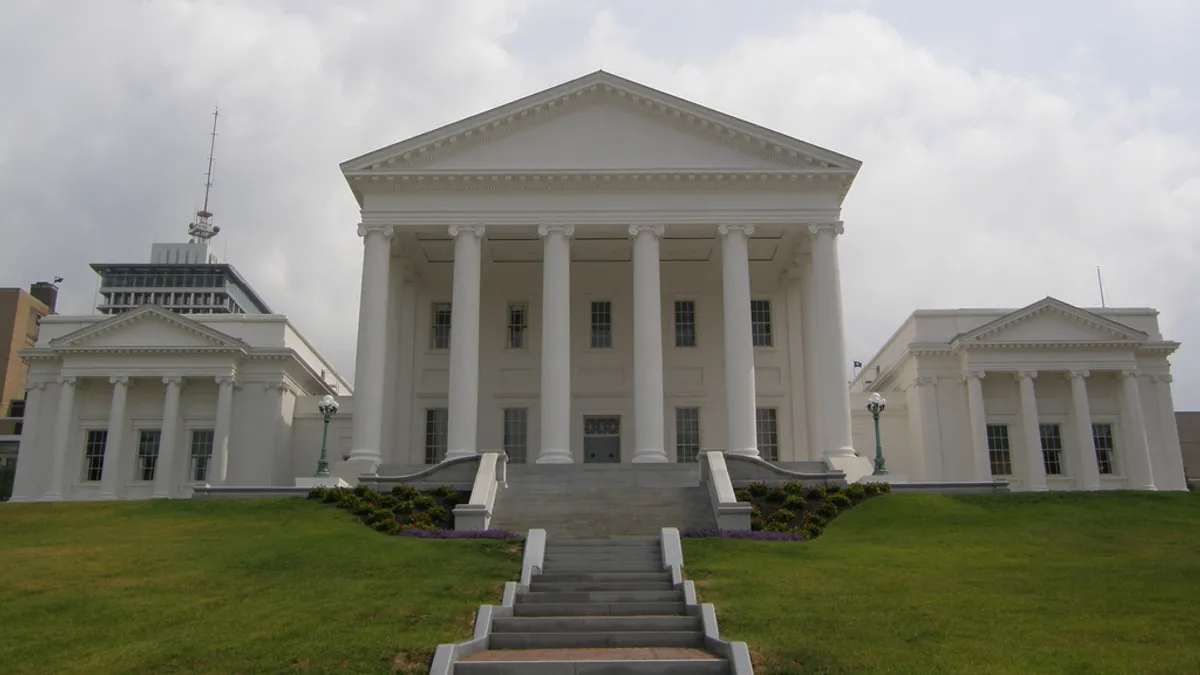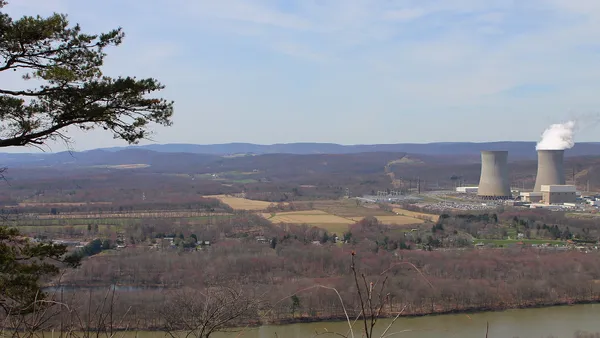Dive Brief:
-
Legislation has been introduced to Virginia’s General Assembly that would lift a rate freeze on electric utilities put in place in 2015, according to the Richmond Times-Dispatch.
-
The 2015 legislation was put in place to help protect the state’s utility customers from the costs of complying the Environmental Protection Agency’s Clean Power Plan, which is now on hold and expected to be repealed.
-
Sen. J. Chapman Petersen, (D), the sponsor of the legislation, says the 2015 law is not needed because the Clean Power Plan will likely be scrapped by the incoming administration of President-elect Donald Trump.
Dive Insight:
In 2015 it appeared that the EPA’s Clean Power Plan was moving toward implementation. It would have imposed the first ever restrictions on carbon dioxide emissions from existing power plants, and had the potential to impose high costs on some utilities.
In an effort to counter those expected costs, Virginia’s General Assembly passed legislation (SB 1349) that put a halt to biennial reviews of base rates for Dominion Virginia Power and Appalachian Power, as well as refunds for customers if the utilities were overcharged. Costs of CPP compliance were to be included through rate riders, and not changes to base rates.
Times have changed. The Clean Power Plan is stayed by the Supreme Court and the incoming Trump administration has promised to cancel the CPP.
In light of those changes, Petersen’s bill would end the State Corporation Commission’s freeze on rate reviews as soon as the Clean Power Plan provisions “are withdrawn, repealed, found by a nonappealable court decision to be invalid or unenforceable, or otherwise are legally barred from being implemented.”
“The whole political context for [the 2015 law] has really been kicked into a bucket,” Petersen told the Times-Dispatch.
But Dominion spokesman David Botkins told the news outlet that “regulatory uncertainly has not decreased since SB 1349 was passed.”
Botkins noted that the EPA is under a Supreme Court order, known as the endangerment finding, that defines carbon dioxide as an air pollutant under the Clean Air Act, so that even if the agency’s current Clean Power Plan is struck down, it will have to come up with another way to restrict CO2 emissions.
The Trump administration could seek to reverse that endangerment finding, but it would have to prove in federal court that CO2 and other greenhouse gases should not be classified as pollutants. That would likely require years of litigation.
Congress could also move to amend the Clean Air Act, but any change to pollutant criteria would meet stiff resistance from Democrats in Congress, and require 60 votes to beat a likely filibuster.
“The broader issue of uncertainty around how EPA will regulate carbon is increasing, given the current Clean Power Plan may be replaced with an alternative that would then be subject to a new round of challenges,” Botkins said.














